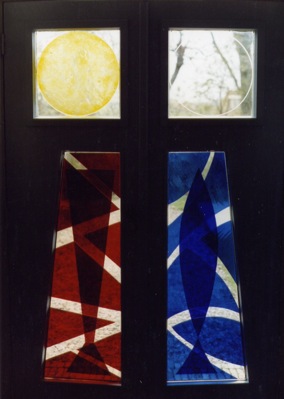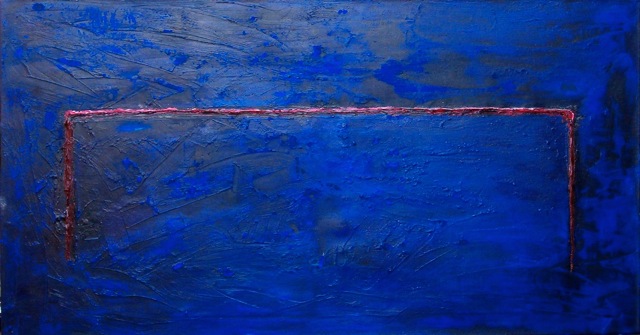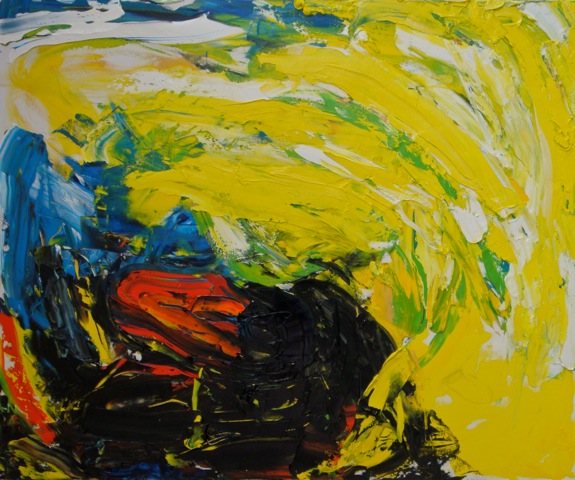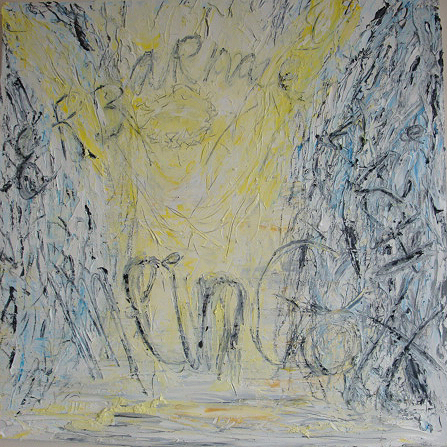Artists
.jpeg)

.jpeg)



Launspach, Cees
Cees Launspach
Bio
On August 1, 1950 Cees Launspach was born in Woerden, The Netherlands. From 1982 -1987 he studied monumental design at the AVK “Vredeman de Vries” Academy in Leeuwarden. This training was an eye-opener to him, his artistic work made a 180° turn.
.jpeg)
After the academy came a period of further development and expositions, at home and abroad. Until the end of the ’90’s he made objects and installations, but due to reduced physical strength he was forced to put the helm over and develop himself in the area of two dimensional work. This was not easy, as there is an essential difference in thinking and approach between a sculptor and a painter. The painter thinks in colours and lines, the sculptor thinks spatially and in forms. But thanks to his persistence and the indispensable direction of his Creator he was able to make the change and now works both on canvas, paper and other materials with paint, crayon and anything else available to his hands.
Work process
‘I think on my knees’ is the inner approach of Cees Launspack when his hands engage in the challenge to depict what goes on in his mind. In 1990 he wrote the following about a land art project that he created as part of the Frysk Festival at Lemmer: ‘While reflecting and sketching ideas and contours in my head hesitantly, slowly, an image emerges.’ Projects, objects and installations take shape in a dialogue between the Creator, the materials and the artist. The difference with the ’80’s and ’90’s and now is that he has started to work more quickly. In the past it could take days, weeks or even months before he considered a work to be ready. Now it can happen that an artwork is finished in a day or even an hour. The experimental expressionism of Karel Appel and others has contributed to this. Development in his work is important to Cees, his work should not become a trick, he does not want to be easily satisfied and most of all he wants to see well (seeing is looking with your feelings and your soul).
‘It is the intense experience of the soul that causes the feelings to be translated into an image.’

1. Church door Raard, Friesland, glass appliqué. Title: Thy Bread, Thy Wine, Thy Fish, Amen – based on a poem by Ida Gerhardt, commissioned by the Foundation Alde Fryske Tsjerken. You see in the two half doors the two R’s of the village Raard. At the same time they represent two figures kneeling towards each other while forming a cross in the middle. At the upper left is the Bread, at the bottom left the Wine, at the bottom right the Fish and at the upper right the Holy Spirit.
.jpeg)
2. Descent came into being after reading a book on this theme,180 x 280 x 70 cm.

3. The very last Lord’s Supper 1, 80 x 150 cm, oil, pigment on canvas. Not for sale. In this painting I have intended to depict the very last table. There is nobody at the table, we only see the body of Christ as table: deserted by G’d and everybody else, stretched out, inviting, this is my Body, everybody is welcome, accept me as I am, beaten, tortured, no beauty. The space around the table is rendered in lashing movements, blue (eternity), pointing at suffering, since without suffering there is no victory. The body/the table is red, referring to the lamb that is slaughtered, to the blood that the Israelites had to spread on their doorposts to save their first-born children and protect the survival of the people of God.

4. Spring, oil on canvas, 50 x 50 cm.

5. Erbarme dich mein Gott came into being after listening to this aria in the St. Matthew Passion of J.S. Bach, oil on canvas, 100 x 100 cm.

6. Easter came about spontaneously. Oil on canvas, 120 x 100 cm.
Website


